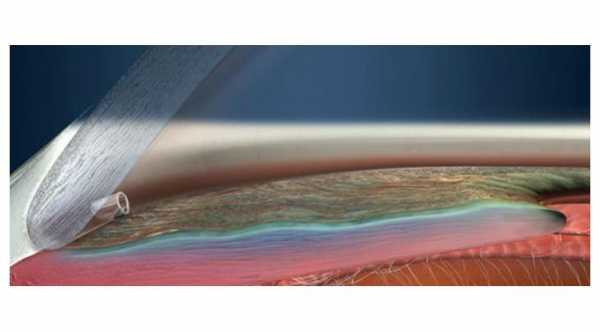
Combined Trabecular Micro-Bypass Stent May Improve Intraocular pressure Control
Intraocular pressure (IOP) is the pressure that is exerted by fluids inside the eye. Intra means “inside” or “within.” Ocular is defined as the eye. Your eyes are within a closed system that is filled with liquids known as vitreous humor and aqueous humor.
Vitreous humor fills the majority of the eye. Aqueous humor can be found in the small portion of the front of the eye. When these fluids exert excess pressure on the walls and other structures of the eye, damage to the eye’s optic nerve can result, which may lead to glaucoma.
An innovative device known as a combined trabecular micro-bypass stent can be used during cataract eye surgery to improve intraocular pressure control. This device is implanted during cataract eye surgery to promote the proper outflow of your eye’s natural fluids.
In traditional cataract surgery, there is a higher risk that eye tissue will be damaged. With the stent in place, this risk is dramatically reduced by ensuring the eye pressure is kept low throughout surgery.
The stent is a tiny device that will also help in maintaining proper eye fluid pressure after surgery. Patients with these devices in place will not be able to feel or see it after it is put in place.
The stent allows a permanent opening in the eye’s trabecular meshwork, which improves fluid outflow from the eyes, and this ultimately assists in maintaining proper control of eye pressure.
The range of normal intraocular pressure within the eye is between 10-20 mmHg. You will experience natural fluctuations in eye pressure throughout each and every day. However, if the fluctuations in pressure are above 6mmHg, then symptoms may begin to appear.
Healthy eyes will fluctuate no more than 3mmHg during any given day. That being said, there are certain situations in which intraocular pressure will exceed beyond 3mmHg. For example, during takeoff and landing in an airplane, your eyes may momentarily fluctuate beyond the normal range, but will not last long enough that any damage will occur to the optic nerve.
If you have been diagnosed with glaucoma, it is important to schedule regular appointments with your ophthalmologist to have your intraocular pressure tested. This Stent may help in controlling intraocular pressure if it is found that your IOP is above normal.
Ask your ophthalmologist about available treatment options so that you can make an educated decision about what treatment plan you feel most comfortable with.


